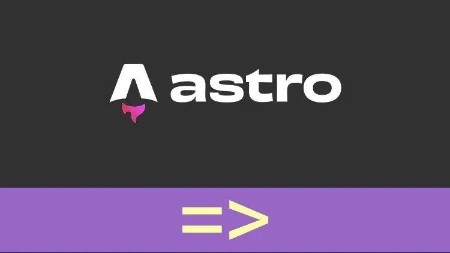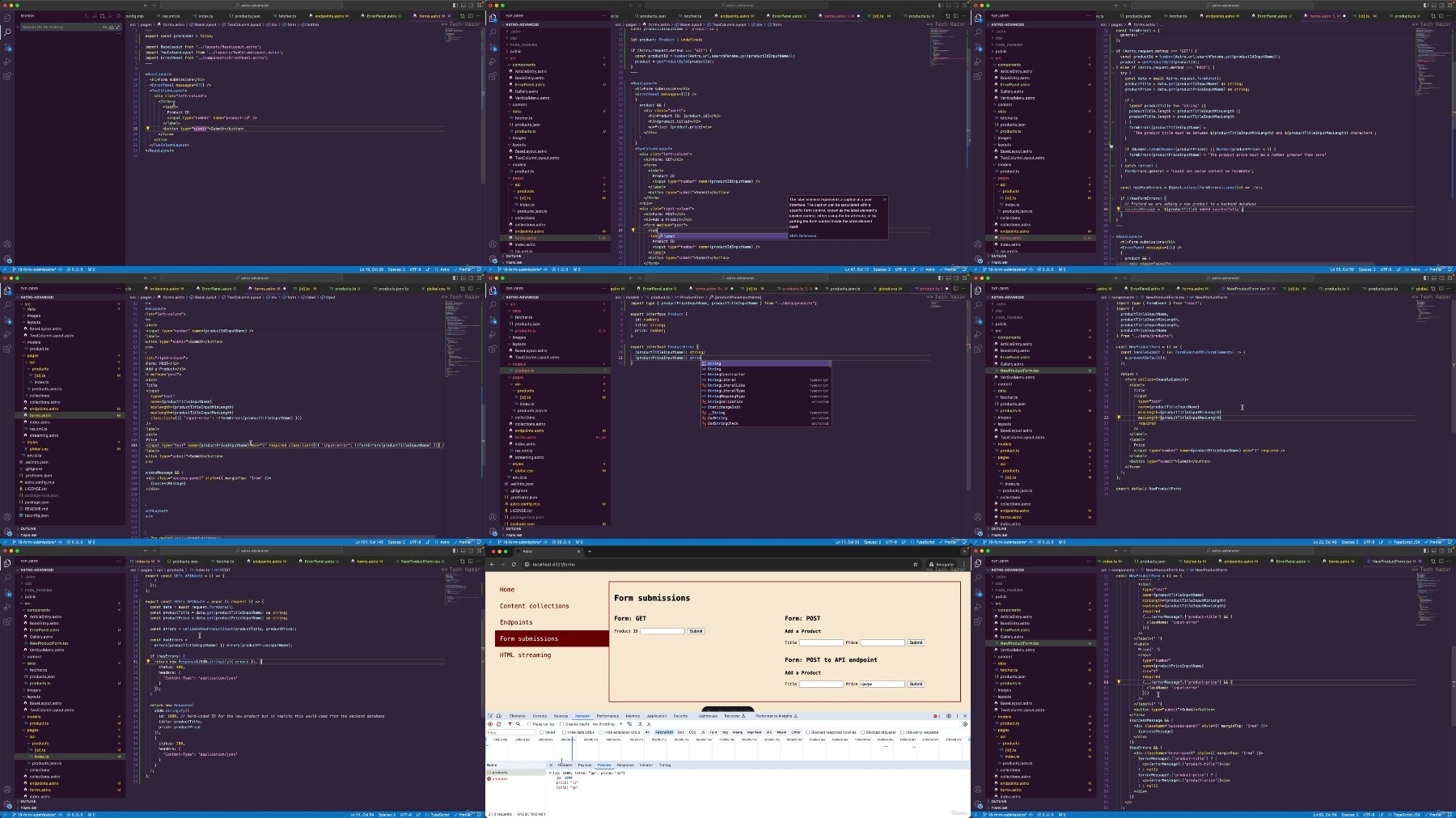Introduction to The Astro web frameWork

Introduction to the Astro web framework
Published 5/2024
Duration: 3h51m | .MP4 1280x720, 30 fps(r) | AAC, 44100 Hz, 2ch | 1.45 GB
Genre: eLearning | Language: English
Create fast, content-driven websites with this pioneering web framework
What you'll learn
Understand the three rendering modes that Astro offers: static, server and hybrid
Understand and apply the islands architecture pioneered by Astro
Learn how to create Astro components
Learn how to create endpoints for APIs or for static files
Learn how to use the special template directives that Astro provides
Learn how to apply middleware logic
Learn different ways of applying CSS
Learn how to enable and apply view transitions
Understand content collections and when to use them
Learn how to enable SPA mode (singe-page app) with view transitions
Learn how to create static and dynamic page routes
Learn about Astro's support for HTML streaming
Learn how to extend the functionalilty of Astro with integrations
Evaluate the features of the Astro web framework
Requirements
Familiarity with HTML, CSS and jаvascript as the course will only focus on features specific to the Astro framework
Basic familiarity with TypeScript
Description
Astro is quickly becoming the preferred framework for creating fast, content-driven websites. Astro can be used for static site generation (SSG), server-side rendering (SSR) or a combination of both. As a framework, Astro can be used on its own or in combination with popular UI libraries like React, Vue, Svelte and Solid. We can even create web pages containing components from multiple, different UI libraries making Astro the ideal framework for creating micro frontends. Used by some of the top companies in the world, learning Astro will be a valuable addition to your skillset as a web developer.
Master the basics of Astro through simple coding examples
Learn how to create Astro components
Learn how to use Astro's file-based routing to create static and dynamic page routes
Learn how to enable client-side routing with View Transitions
Discover the benefits of the islands architecture pioneered by Astro
Manage web content with Astro's content collections and schema validation
Create API endpoints and learn how to apply middleware logic
Learn about Astro's support for HTML streaming
This course introduces you to the features and capabilities of the Astro web framework without taking too much of your time.
Watch or follow along with simple coding examples and cement your understanding of the concepts with the recap section after every coding lecture.
By the end of the course you will have a thorough understanding of the basics of Astro.
Who this course is for:
Web developers looking to learn the basics of the Astro web framework within a short time
Technical Leads and Solution Architects looking to evaluate the benefits of the Astro web framework within a short time
More Info

What you'll learn
Understand the three rendering modes that Astro offers: static, server and hybrid
Understand and apply the islands architecture pioneered by Astro
Learn how to create Astro components
Learn how to create endpoints for APIs or for static files
Learn how to use the special template directives that Astro provides
Learn how to apply middleware logic
Learn different ways of applying CSS
Learn how to enable and apply view transitions
Understand content collections and when to use them
Learn how to enable SPA mode (singe-page app) with view transitions
Learn how to create static and dynamic page routes
Learn about Astro's support for HTML streaming
Learn how to extend the functionalilty of Astro with integrations
Evaluate the features of the Astro web framework
Requirements
Familiarity with HTML, CSS and jаvascript as the course will only focus on features specific to the Astro framework
Basic familiarity with TypeScript
Description
Astro is quickly becoming the preferred framework for creating fast, content-driven websites. Astro can be used for static site generation (SSG), server-side rendering (SSR) or a combination of both. As a framework, Astro can be used on its own or in combination with popular UI libraries like React, Vue, Svelte and Solid. We can even create web pages containing components from multiple, different UI libraries making Astro the ideal framework for creating micro frontends. Used by some of the top companies in the world, learning Astro will be a valuable addition to your skillset as a web developer.
Master the basics of Astro through simple coding examples
Learn how to create Astro components
Learn how to use Astro's file-based routing to create static and dynamic page routes
Learn how to enable client-side routing with View Transitions
Discover the benefits of the islands architecture pioneered by Astro
Manage web content with Astro's content collections and schema validation
Create API endpoints and learn how to apply middleware logic
Learn about Astro's support for HTML streaming
This course introduces you to the features and capabilities of the Astro web framework without taking too much of your time.
Watch or follow along with simple coding examples and cement your understanding of the concepts with the recap section after every coding lecture.
By the end of the course you will have a thorough understanding of the basics of Astro.
Who this course is for:
Web developers looking to learn the basics of the Astro web framework within a short time
Technical Leads and Solution Architects looking to evaluate the benefits of the Astro web framework within a short time
More Info

